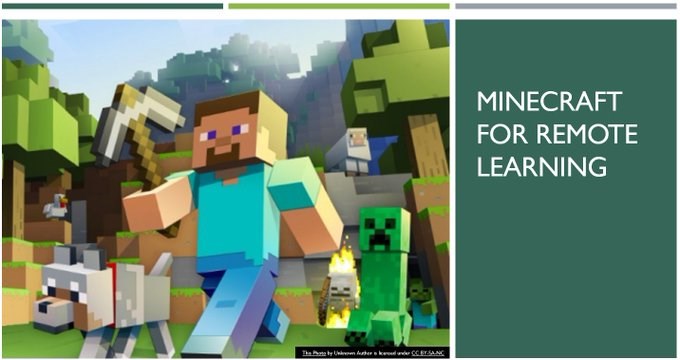Can a popular video game be used to teach subjects that kids often shy away from — like math?
School District 43 (SD43) thinks so, and so far, experiments in teaching with Minecraft are paying off.
This week, Coquitlam area school trustees were told how Minecraft, a video game where kids manipulate blocks to make creative 3D worlds, is making math and science fun for thousands of students in grades 5 to 8.
Parents often struggle to get their kids off of video games because they can be all-consuming and youngsters fight monsters and each other to build their worlds.
Not so with SD43, which has strict control over who students work with and how data is stored.
As it promotes STEAM learning in schools, SD43 is using an educational version of the game where students can safely collaborate on projects with others in their class.
In this version there are no monsters or players to attack, kill or steal their hard earned (or bought) virtual possessions, or destroy the buildings they have worked hard to build.
MINECRAFT 'ENGAGES' STUDENTS IN MATHEMATICS INQUIRY
“Minecraft engages students both at school at home in an inquiry around mathematics,” explained technology support teacher Rob Heinrichs.
Instructors allow kids to manipulate blocks to construct complex shapes, answer math problems and resolve real-world issues, such as climate change and how to live safely on Mars.
In one project, students built their fantasy home, which involved them in “rich mathematical tasks”, Heinrichs said, such as estimation, scale, area and perimeter and graphing.
Minecraft was also used for a science project: students designed habitations that could withstand an extreme environment, such as the deep ocean or space.
Some students built floating stations on Minecraft that could rise and fall depending on the water level, while others built habitations for humans on Mars, complete with water harvesting mechanisms and food systems.
The students also learned about radiation and what is required for human existence on a planet without an Earth-like atmosphere.
More than 40 school teams created entries to the Mission 43 Build a Better World contest, which is being organized by Minecraft.
“We are eagerly awaiting the results,” commented Heinrichs.
To promote collaboration, the district created a website available to students either at home or in the classroom and so teachers could use prepared lesson plans or come up with their own. Students were also invited to weekly sessions where they could learn to use Minecraft and work on their projects.
One advantage, said the educators, is how many of the students using the Minecraft education edition already know how to use the system of “redstone” (the equivalent of electricity) and blocks in Minecraft because they play the game at home.
This knowledge is set to give them a leg up in a form of project-based learning while some students find they learn more than the rudiments of building in Minecraft.
James Gill told trustees Minecraft could also teach social and emotional learning because students have to get along and work together to create their projects.
It was used to get students who normally face difficulties in communication and social skills to collaborate and by the end, some students saw progress, he said.
“They were asking others to join in building, and others were sharing how things felt,” Gill said.
TECHNOLOGY USED TO TEACH STEAM CURRICULUM TO STUDENTS AT SD43
“Minecraft for social skills is likely to be ongoing.”
Dave Sands, who heads up the district’s technology support team, told trustees that Minecraft gives students the freedom to create, pushing their imaginations and inspiring them to higher-level and critical thinking.
Here's two treehouses from our first Minecraft Education club weekly challenge! We look forward to seeing your designs! @mmehowardsclass @sd43bc @PlayCraftLearn #minecrafteducation
— Kwayhquitlum Middle (@KwaySD43) April 6, 2020
You can join us on Teams using the code el38lhl pic.twitter.com/IEZcvDuo6J
He called the introduction of Minecraft a “thoughtful” use of technology tools to support students.”
It’s also been used by high school students in technology electives to learn coding and how to make things that can be produced using 3D printers.
Minecraft is one of a number of projects the district employs to advance its STEAM (Science, Technology, Engineering, Arts and Math) subjects in the curriculum.
“I love how we can take a tool that kids originally use to play — as a distraction, a game — and turn it into an educational tool,” said Port Coquitlam trustee Michael Thomas.




